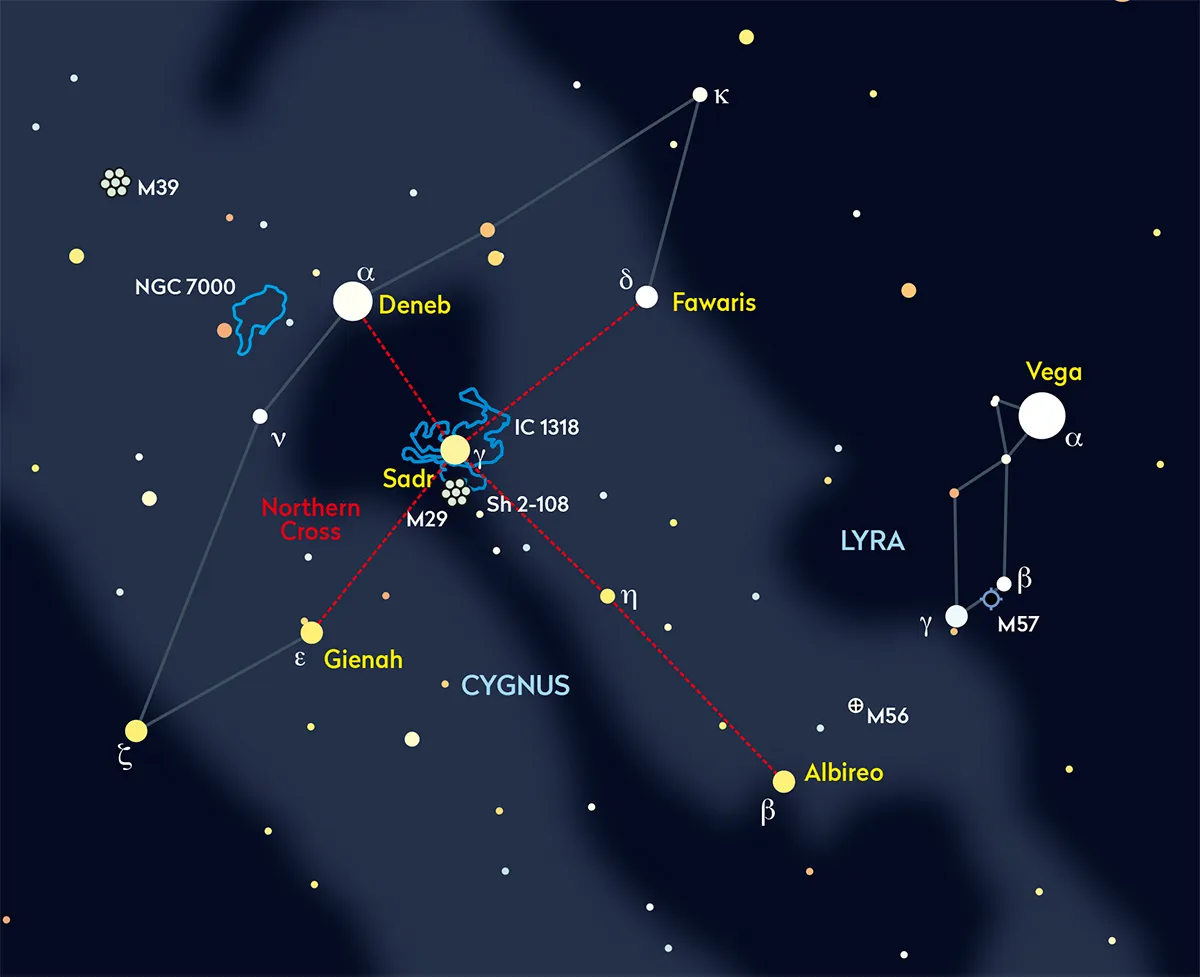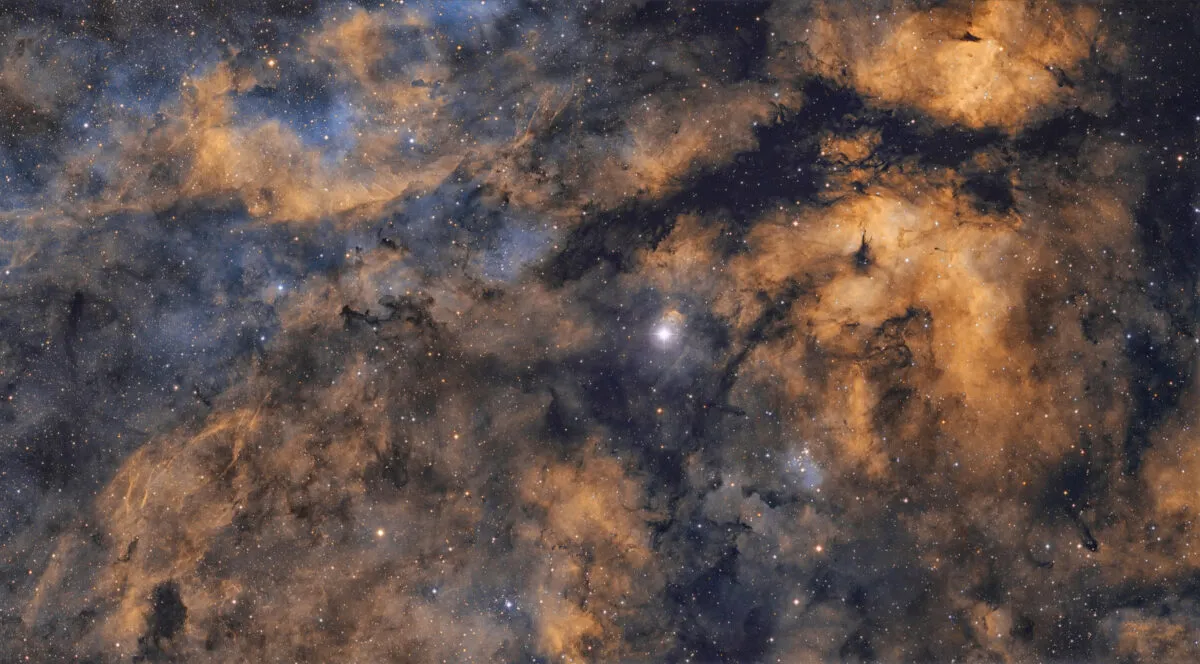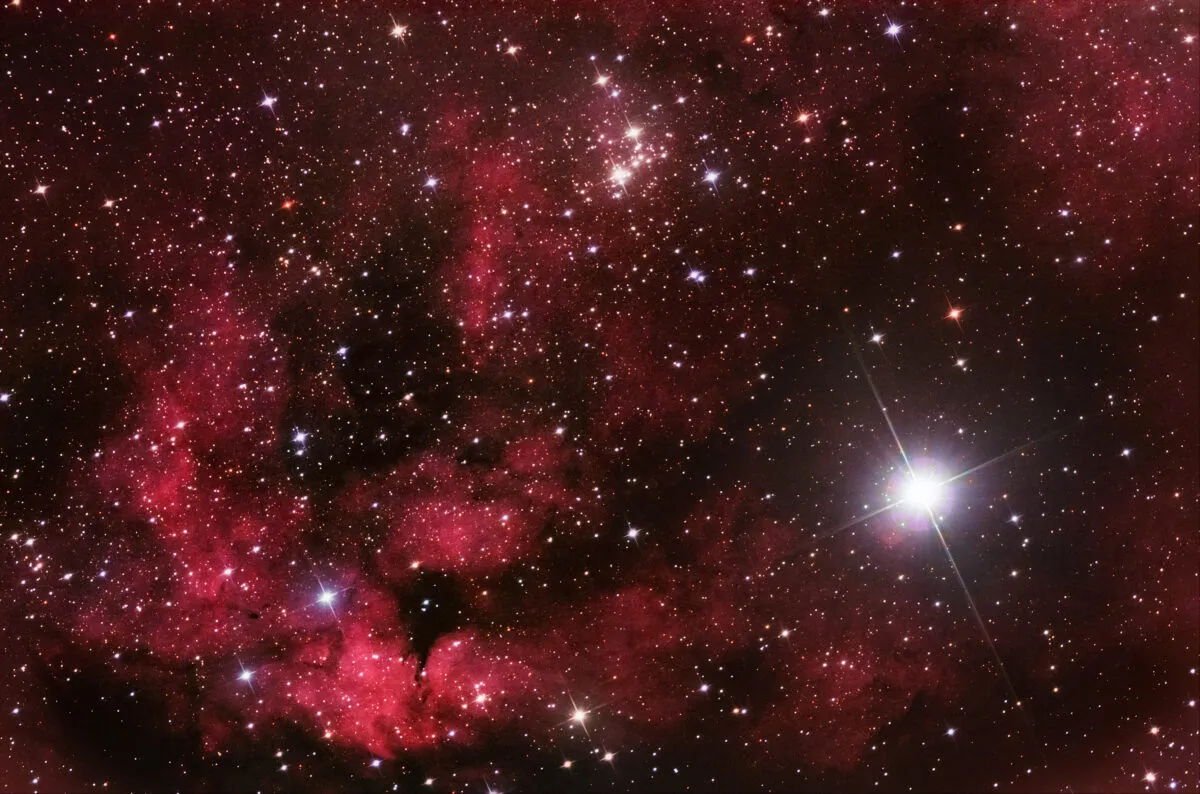Sadr is a star that's really easy to identify as it sits at the heart of the large summer asterism known as the Northern Cross, the core portion of Cygnus, the Swan.
Its high position in the summer sky makes it one of the best summer stars to observe.

The name Sadr is pronounced ‘sadder’ and means ‘chest’, a reference to where the star sits within the Swan.
You can also find it sitting near the Summer Triangle asterism.
Sadr is known as Gamma (γ) Cygni and despite the gamma label, at mag. +2.2 it is the second-brightest star in Cygnus after mag. +1.3 Deneb (Alpha (α) Cygni).

Sadr is a popular target for summer observing as it sits within a bright portion of the Milky Way, on the edge of a dark region known as the Cygnus Rift, where the Milky Way appears to split in two.
The apparent split is caused by a dark dust cloud between us and the myriad stars in the disc of the Milky Way.
Sadr itself is also affected by the dust: it dims the star’s light by around half a magnitude.
Facts about star Sadr

Sadr is a supergiant with a spectral classification of F8 Iab. This puts it in the yellow-white category, more towards the yellow end, while ‘Iab’ indicates it’s an intermediate-size luminous supergiant.
For nearly 80 years, Sadr’s spectrum has been used as a stable reference point to classify other stars against.
Physically, Sadr is 150 times larger than our Sun, contains 12 times as much mass and is emitting 33,000 times more energy.

Consequently, Sadr is thought to be fairly young, at around 12 million years old. It’s estimated to lie around 1,800 lightyears from the Sun.
The region around Sadr contains IC 1318, a complex diffuse nebula emitting strongly at hydrogen alpha wavelengths.
As a result, the region is popular for long-exposure photographs, with Sadr at the centre.
This article originally appeared in the August 2022 issue of BBC Sky at Night Magazine.

